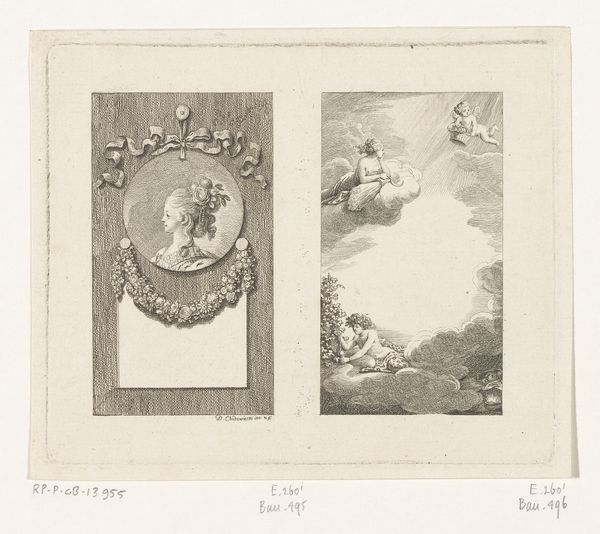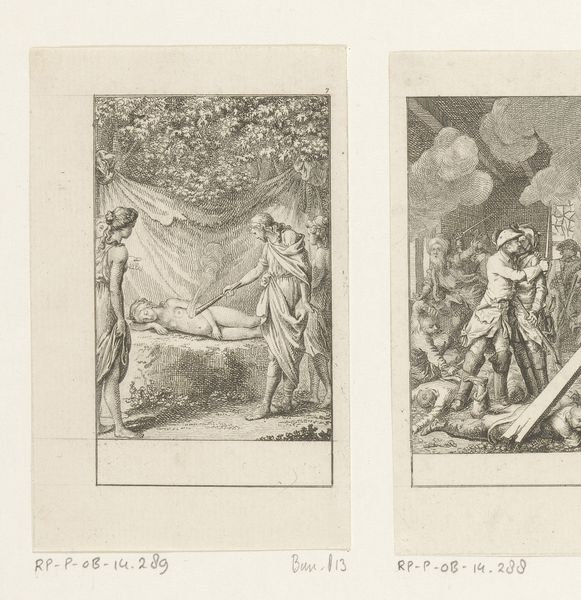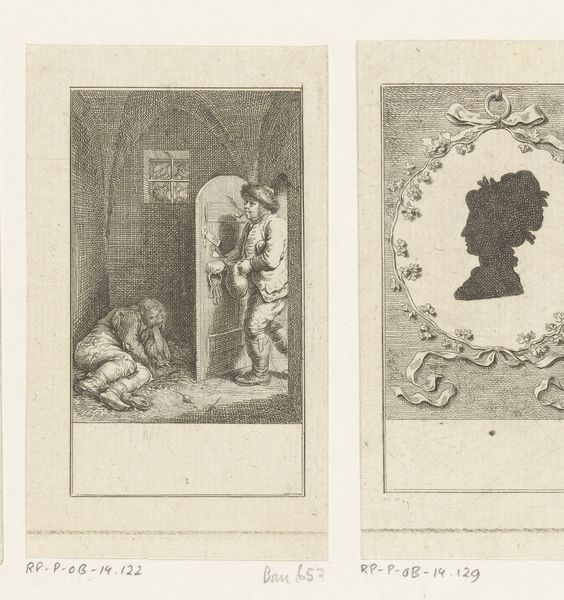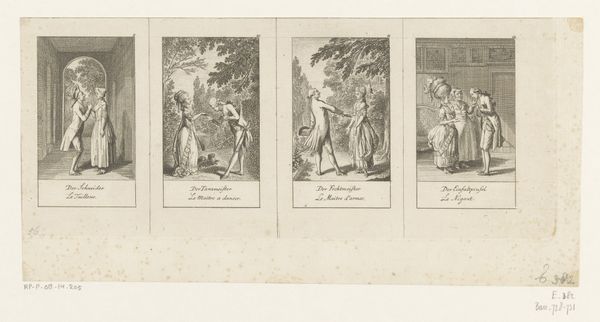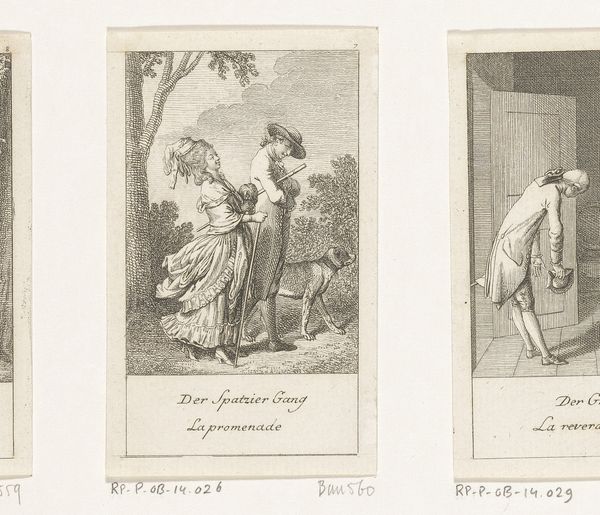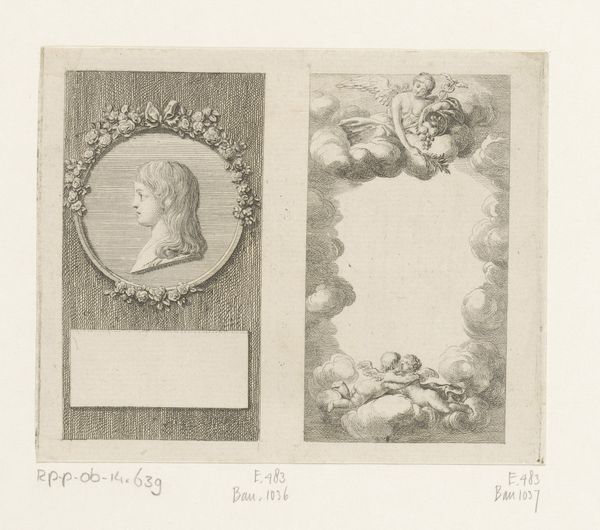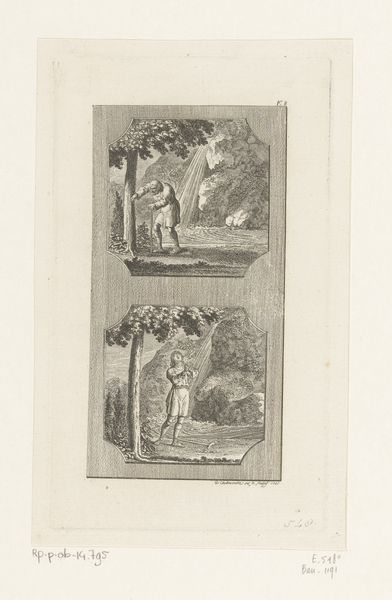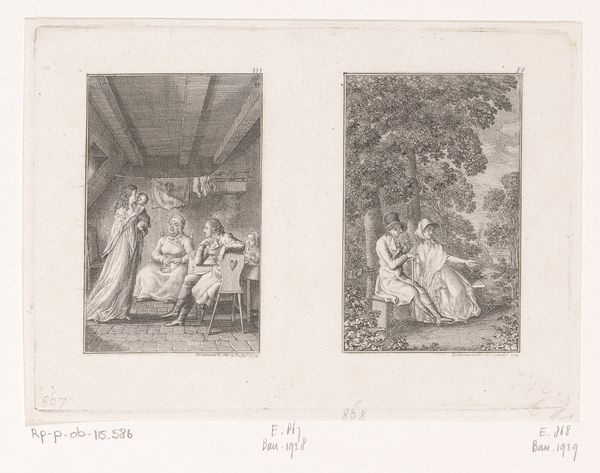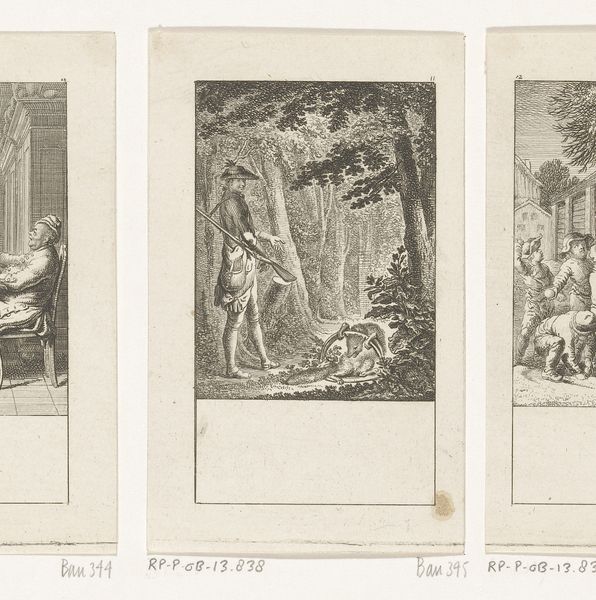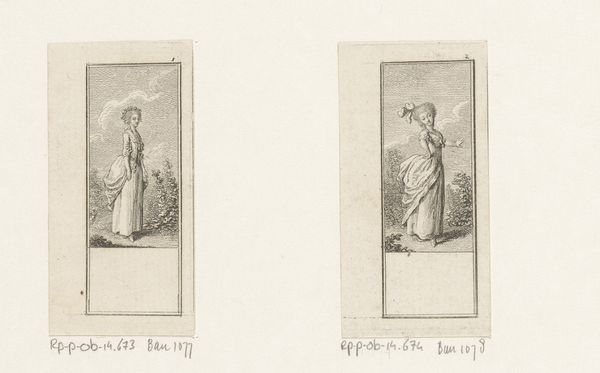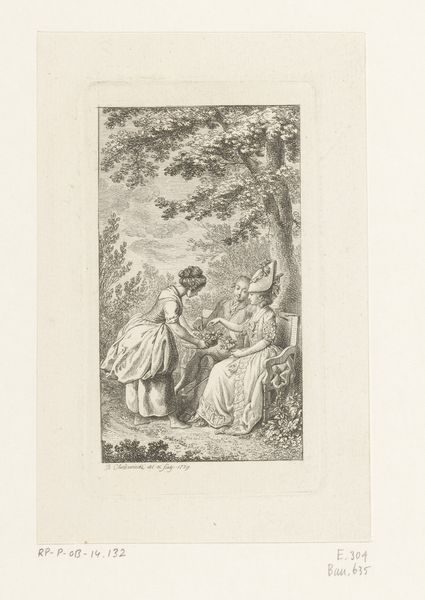
Portret en titelpagina voor de Lauenburg kalender 1781 1780
0:00
0:00
Dimensions: height 104 mm, width 126 mm
Copyright: Rijks Museum: Open Domain
Editor: So, this engraving by Daniel Chodowiecki, made around 1780, is called "Portret en titelpagina voor de Lauenburg kalender 1781," or "Portrait and title page for the Lauenburg calendar 1781". I'm immediately struck by how the composition divides the page so distinctly—a portrait on one side and these allegorical figures on the other. What do you make of these choices? Curator: That division is precisely where we can begin to unpack the function of this print. It wasn't simply art for art's sake. Calendars at this time played a vital role in daily life, particularly for those in more rural areas like Lauenburg. How do you think the imagery would impact the reception of the calendar itself? Editor: Well, it would elevate it, right? Give it an air of sophistication beyond just dates and times. That portrait medallion, even without knowing who it depicts, adds a sense of prestige. Curator: Exactly! Think about the rise of printed material during this period. Images like these weren't just decorative; they were part of a larger social phenomenon of disseminating information and shaping public perception. And that allegorical side? Consider what those classical figures and the globe might signify within the context of the Holy Roman Empire at the time. Editor: I see, so it's not just decoration but almost a form of...propaganda? Reinforcing certain values or ideas through readily available imagery? Curator: Precisely. It's about using classical imagery to connect Lauenburg to a broader European culture, but also to subtly reinforce hierarchies and political order. So, in its function as a widely available calendar, what values would that imagery convey to its readers, or owners? Editor: That’s fascinating. I hadn’t really thought about the power dynamics embedded in something as seemingly mundane as a calendar. Curator: Exactly! Everyday objects like these become powerful vehicles for cultural and social messages. That interplay between art, utility, and societal values makes this engraving so interesting, I think.
Comments
No comments
Be the first to comment and join the conversation on the ultimate creative platform.
